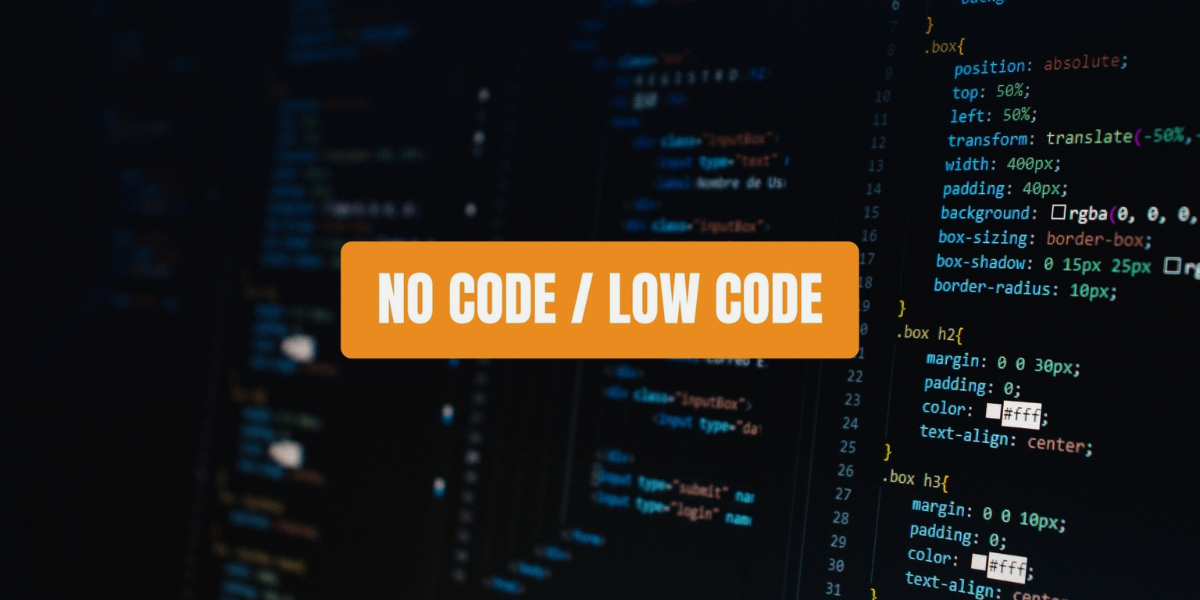Low-Code and No-Code: The Future of Rapid Development

Empowering Businesses with Rapid, Cost-Effective, and Scalable Development Using Low-Code and No-Code Platforms
In a time when businesses seek swift, scalable, and economical solutions, low-code and no-code platforms have become revolutionary. These platforms simplify software development by enabling developers—and even non-technical users—to create applications with minimal coding effort.
As businesses strive for digital transformation, low-code and no-code tools empower them to build applications quickly, automate processes, and reduce operational costs. But how do these platforms work, and what makes them so powerful? Let’s investigate their capabilities, advantages, limitations, and real-world applications.
What Are Low-Code and No-Code Platforms?
Low-Code Development Platforms (LCDP)
Low-code platforms allow developers to create applications using a graphical interface with drag-and-drop components while offering the flexibility to write custom code. These platforms reduce manual coding efforts and accelerate the development lifecycle.
Examples of Low-Code Platforms:
- Microsoft PowerApps
- OutSystems
- Mendix
- Appian
Who Uses It?
- Professional developers looking to build apps faster
- Businesses requiring customized applications with some coding flexibility
No-Code Development Platforms (NCDP)
No-code platforms are designed for non-technical users. They allow them to build applications entirely through visual interfaces without writing code. These platforms are ideal for simple applications, automation, and workflow management.
Examples of No-Code Platforms:
- Bubble
- Adalo
- Wix (for websites)
- Zapier (for workflow automation)
Who Uses It?
- Business analysts
- Entrepreneurs
- Small businesses
- Citizen developers (non-technical users building apps for internal use)
Best Low-Code and No-Code Platforms and Their Applications

How Low-Code and No-Code Platforms Accelerate Development
- Drag-and-Drop UI Components: These platforms provide pre-built UI components, eliminating the need for manual HTML, CSS, and JavaScript coding.
- Pre-Built APIs and Database Integration: Most platforms support seamless API integrations and database connectivity without requiring backend development.
- Automated Workflows: No-code tools like Zapier and Make.com help automate repetitive business processes without writing complex scripts.
- Cloud Deployment and Scalability: Many low-code/no-code platforms offer cloud-based hosting with built-in scalability options.
- AI-Assisted Development: Some platforms now integrate AI-powered tools to suggest components, automate testing, and generate code snippets.
Advantages of Low-Code and No-Code Platforms
Faster Development Cycle
- Reduces time-to-market by eliminating repetitive coding.
- Enables businesses to launch McVPs (Minimum Viable Products) in weeks instead of months.
Lower Development Costs
- Reduces the need to hire large developer teams.
- Eliminates costs associated with backend infrastructure and security management.
Enhanced Collaboration
- Business users and developers can work together seamlessly using a single platform.
Easier Maintenance and Updates
- Applications built on these platforms can be easily updated without requiring manual code changes.
Increased Accessibility for Non-Developers
- Empower citizen developers to build apps without programming knowledge
Built-in Security and Compliance
- Many enterprise-grade platforms come with pre-configured security settings and compliance certifications.
Disadvantages of Low-Code and No-Code Platforms
Limited Customization
- No-code platforms are restrictive regarding complex business logic or advanced UI/UX requirements.
Vendor Lock-in Risks
- Many platforms restrict data portability, making migration difficult if a business switches providers.
Scalability Issues
- No-code platforms may struggle to handle large-scale applications with extensive real-time processing.
Performance Limitations
- Applications built on no-code tools may not be as optimized as custom-coded solutions.
Security and Compliance Concerns
- Businesses in highly regulated industries (e.g., finance, healthcare) must ensure that the platform meets industry-specific compliance standards (e.g., GDPR, HIPAA).
Pros and Cons of Low-Code and No-Code Platforms

Where Can Low-Code and No-Code Platforms Be Applied?
Startups and Entrepreneurs
- Quickly build MVPs and test business ideas without investing in an entire development team.
Enterprise Digital Transformation
- Large companies can modernize legacy systems and automate workflows.
E-commerce and Retail
- No-code platforms help launch online stores (e.g., Shopify, Wix).
- Low-code tools enable custom e-commerce integrations with ERPs and CRMs.
Healthcare and Telemedicine
- Build HIPAA-compliant applications for patient data management and teleconsultation services.
Banking and FinTech
- Develop custom financial apps and automate workflows like fraud detection and risk analysis.
Marketing Automation and CRM
- Automate customer engagement workflows using HubSpot, Salesforce, or Make.com.
Internal Business Process Automation
- Automate HR processes like employee onboarding and payroll management.
How Low-Code and No-Code Platforms Help Businesses Scale Faster
Reduce Software Development Costs
- Eliminates the need for large teams of developers.
- Decreases software maintenance costs.
Faster Innovation and Market Adaptability
- Businesses can quickly adapt to market changes by rapidly modifying applications.
Higher Productivity
- Frees up IT teams to focus on strategic tasks instead of coding from scratch.
Democratization of Software Development
- Empowers non-technical users to build solutions, reducing dependency on IT departments.
The Future of Low-Code and No-Code Development
As businesses continue to embrace automation and digital transformation, low-code and no-code platforms will play an increasingly critical role in shaping the future of software development. While these platforms may not replace traditional development for highly complex applications, they are undeniably powerful tools for rapid innovation, cost reduction, and business agility.
Businesses looking to streamline development, cut costs, and accelerate time-to-market can benefit greatly from low-code and no-code platforms.

Thirumalesh Prasad C G (Thiru) is an entrepreneur, Founder, and CEO of Inboundsys. He has over 22 years of experience working for various multinational IT products and services companies in India and abroad. He was a significant member and worked as a user interface architect, designing the user interface for many web applications and products. In addition to running Inboundsys, he is an advisory board member in various other design studios and digital marketing agencies. He is a passionate blogger who loves writing on digital marketing, inbound marketing, lifestyle, philosophy, positive thinking, and motivation.